Established 2002
Written and designed by Roy Shepherd. Special
thanks to my wonderful wife
Lucinda Shepherd, friend Robert Randell and various experts for their support.
What is pyrite?
Lucinda Shepherd, friend Robert Randell and various experts for their support.
What is pyrite?
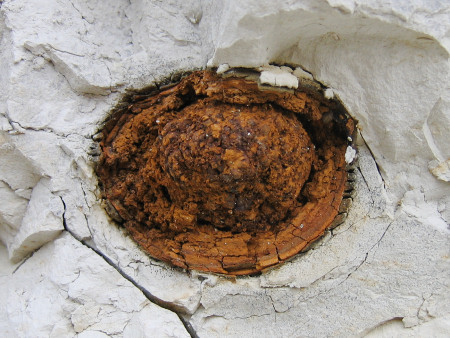
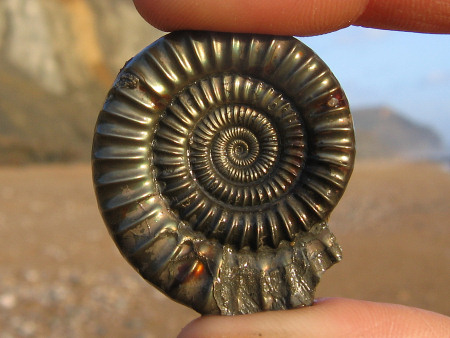
Left: A heavily oxidised (rusting) pyrite nodule within a chalk cliff-face. Right: A spectacular pyrite ammonite (Echioceras) from Charmouth.
The mineral pyrite, or iron pyrite, is iron disulfide, FeS2. It has isometric crystals that appear as cubes or pyritohedrons (twelve irregular, pentagonal or five-sided faces). Pyrite takes its name from the Greek word 'pyros' meaning 'fire' because sparks flew from it when hit with another mineral or a metal.
Pyrite is commonly referred to as 'Fool's Gold'. There are other similar gold-like minerals, but pyrite is by far the most common and the most often mistaken for gold. The notable difference is that Pyrite is much harder and more brittle than gold and cannot therefore be cut or shaped. In addition, gold has no odour, but pyrite gives off a sulphurous smell (like rotten eggs). Although pyrite is common and contains a high percentage of iron, it has never been used as a significant source of iron. However nodules also contain a high sulfur content and were mined for this during World War II and used in the production of sulfuric acid.


ADVERTISEMENT BY UKGE - OFFICIAL ADVERTISING PARTNER OF DISCOVERING FOSSILS
How does pyrite form (pyritisation)?
One of the most important chemical processes in organic-rich marine sediments is decomposition of organic matter in bacterial sulphate reduction. Bacterial sulphate reduction produces bisulphide. Bisulphite can be partially oxidised or can react with organic matter and reactive metal species. All these reactions may be bacterially mediated. The reaction of reduced sulphur with reactive dissolved iron and iron minerals, if available, results in the formation of iron sulphides. The most common iron sulphide in pyrite.
The amount of pyrite formation in marine sediments is largely determined by the availability of sulphate, reactive iron and reactive organic matter during the formation of the sediments.
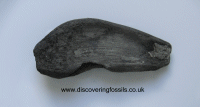
Click image above to view hi-res.
Pyrite can cause serious problems when trying to preserve certain specimens. Once exposed to the moisture in the air, unstable pyrite can disintegrate due to oxidation, resulting is partial or complete destruction of the fossil.


ADVERTISEMENT BY UKGE - OFFICIAL ADVERTISING PARTNER OF DISCOVERING
FOSSILS
Pyrite and marcasite
Pyrite is often mistaken for the mineral marcasite due to their similar characteristics. In fact marcasite is a polymorph of pyrite, which means it has the same chemistry as pyrite but a different structure, resulting in different symmetry and crystal shapes. Marcasite has a much greater tendency to react to the air and therefore crumbles and turns into a yellow/green powder.
Join us on a fossil hunt
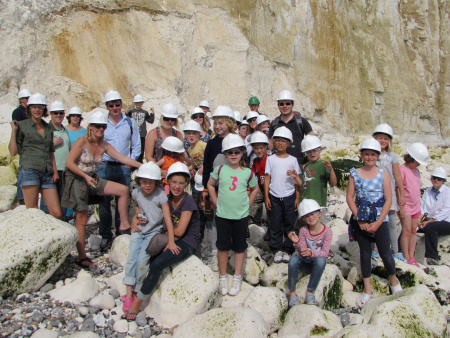
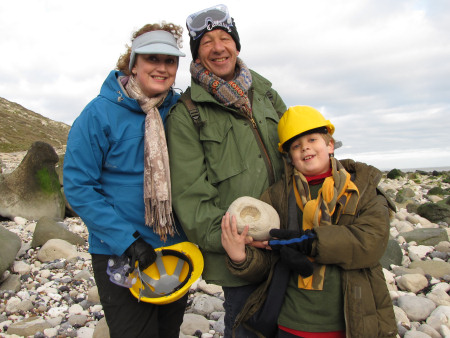
Left: A birthday party with
a twist - fossil hunting at
Peacehaven.
Right: A family hold their prized ammonite at Beachy Head.
Discovering Fossils guided fossil hunts reveal evidence of life that existed millions of years ago. Whether it's your first time fossil hunting or you're looking to expand your subject knowledge, our fossil hunts provide an enjoyable and educational experience for all. To find out more CLICK HERE




